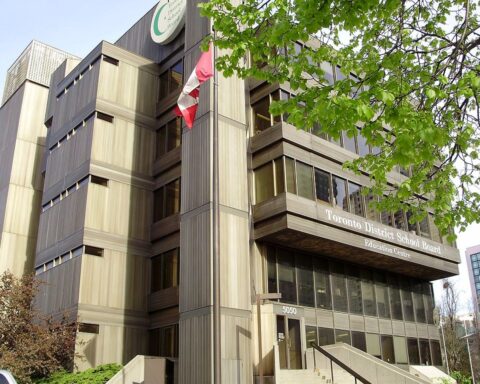Statistics Canada recently released a series of reports analyzing key results from the 2016 Census, including figures on immigration and ethnocultural diversity. The data paints a familiar picture of the Canadian social landscape – a landscape that is increasingly defined by culturally diverse peoples and communities.
The census brief on “Children with an immigrant background: Bridging cultures” captures important data that should prompt us to think critically about the live experiences of this large population segment, as well as its implications for Canadian social, political and economic life.
There were many interesting trends and figures highlighted in the report, including the number of people with foreign born parents, shifts in origin country demographics, family and household dynamics, and linguistic and cultural practices.
For example, in 2016, close to 2.2 million children under the age of 15, or 37.5 percent of the total population of children, had at least one foreign-born parent. The report also notes that children with an immigrant background could represent between 39 percent and 49 percent of the total population of children by 2036.
Further, most people with an immigrant ancestry that were younger in age (under 30s) had origins in Asia and Africa, whereas the older cohort of Canadians with immigrant ancestry (over 30s) tended to trace their origins to Europe and the Americas. This a reflection of shifting immigration trends in Canada over the years.
There were other insights capturing immigration dynamics at the household level. Children born in Canada to at least one foreign-born parent were most likely to live in a multigenerational household, with grandparents, parents, and children under the same roof. In the report, they were interested in how this might affect and drive the transmission of origin-country language and culture.
As with all census data, the information gathered here is limited. While it provides a helpful snapshot and indication of how global migration trends intersect with changes in Canadian demographics, it also leads to some deeper questions that emerge that require further inquiry and debate among practitioners, policymakers, academics, immigrant communities, and young people alike.
How much do we really understand about the social and cultural practices of children of immigrants and their families? Do we account for these lived experiences in how we design programs and services, frame public discourse, and plan for the political and economic future of the country? Are we adequately leveraging the opportunities and addressing the issues presented by these transnational social landscapes?
How do immigration trends and demographic changes intersect with social inequalities in Canada and around the world? Do young Canadians with an immigrant background feel that they belong? How do race, class, and gender further segment immigrants and their children in Canada?
These are complex questions that don’t lend themselves well to simple answers; however, they are worth asking and continuing to ask as we work towards a future where equity aligns with diversity.
The future of Canada is more diversity and it is characterized by social, political, and economic connections to places around the world. Therefore, it is time we move beyond a multiculturalism framework that accommodates and celebrates diversity, and towards an inclusionary framework that acknowledges and works to address the social inequalities embedded within this diversity.
Yes, children with an immigrant background can tell us a lot about their international influences, tastes, and practices. However, they can also tell us a lot about Canada – both what it is today and where it should be headed in the future.
A version of this piece was first published on the Wellesley Institute blog on November 7, 2017, and can be accessed via this link




